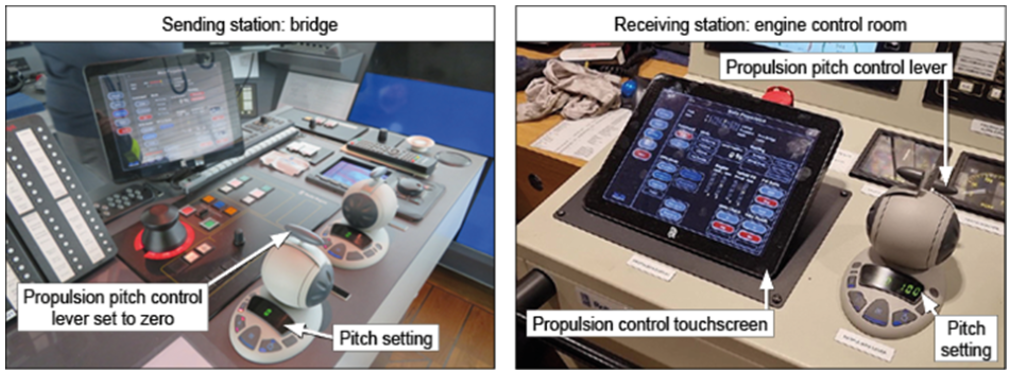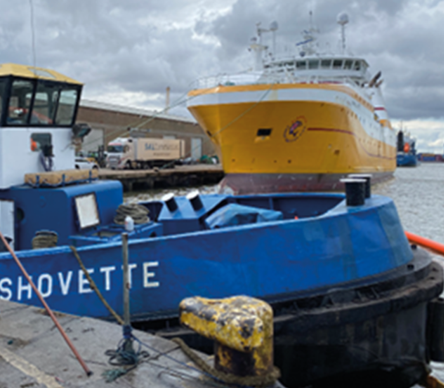MAIB: vessel collision caused by mismatch between bridge and engine room control
The UK Marine Accident Investigation Branch (MAIB) has published a Safety flyer relating to a collision between two vessels caused by loss of propulsion control.
What happened
Fishing vessel Kirkella lost control of its propulsion system while berthing, and collided with the harbour tug Shovette in the port of Hull, UK. Kirkella’s bulbous bow breached Shovette’s hull and starboard fuel tank during the collision, causing the tug to partially sink and resulting in approximately 7,000 litres of marine diesel oil spilling into the dock. Kirkella was not damaged. There were no injuries.
Kirkella’s propulsion system comprised a single main engine driving a controllable pitch propeller via a clutch and gearbox. The propulsion system could be operated from several stations located in the wheelhouse and from the engine control room (ECR). The loss of control occurred when the propulsion control was passed from the bridge to the ECR with the clutch engaged. At the time of the handover, the bridge propeller pitch lever was set at zero, while the ECR’s propeller pitch lever was set at 100% ahead. The propeller pitch automatically advanced when control was accepted in the ECR, causing Kirkella to move forward on the berth.
What went wrong
- The pitch levers for Kirkella’s propulsion control system were not synchronised between the bridge and engine control room when control was transferred. The propulsion control system was not fitted with interlocks to prevent this from happening – these were not required;
- Kirkella’s engineer had not checked that the engine room pitch lever was matched to the bridge pitch setting when control was passed from the bridge to the engine room;
- There was no procedure for control changeover.
Lessons
The MAIB report drew the following lessons:
- The interlocks, which were optional, could be retrofitted by the engine manufacturer;
- Robust shipboard practices are essential to maintain propulsion control during handover, regardless of whether system interlocks are fitted. Documented procedures should contain a requirement for the operator of the sending station and the receiving station to check that propulsion systems pitch settings are synchronised at the time of transfer.
- To reduce the risk of propulsion thrust being applied inadvertently while alongside the MAIB suggests that it is advisable to declutch engines before transfer of control.
Safety Event
Published: 3 September 2024
Download: IMCA SF 18/24
IMCA Safety Flashes
Submit a Report
IMCA Safety Flashes summarise key safety matters and incidents, allowing lessons to be more easily learnt for the benefit of all. The effectiveness of the IMCA Safety Flash system depends on Members sharing information and so avoiding repeat incidents. Please consider adding [email protected] to your internal distribution list for safety alerts or manually submitting information on incidents you consider may be relevant. All information is anonymised or sanitised, as appropriate.
IMCA’s store terms and conditions (https://www.imca-int.com/legal-notices/terms/) apply to all downloads from IMCA’s website, including this document.
IMCA makes every effort to ensure the accuracy and reliability of the data contained in the documents it publishes, but IMCA shall not be liable for any guidance and/or recommendation and/or statement herein contained. The information contained in this document does not fulfil or replace any individual’s or Member's legal, regulatory or other duties or obligations in respect of their operations. Individuals and Members remain solely responsible for the safe, lawful and proper conduct of their operations.


